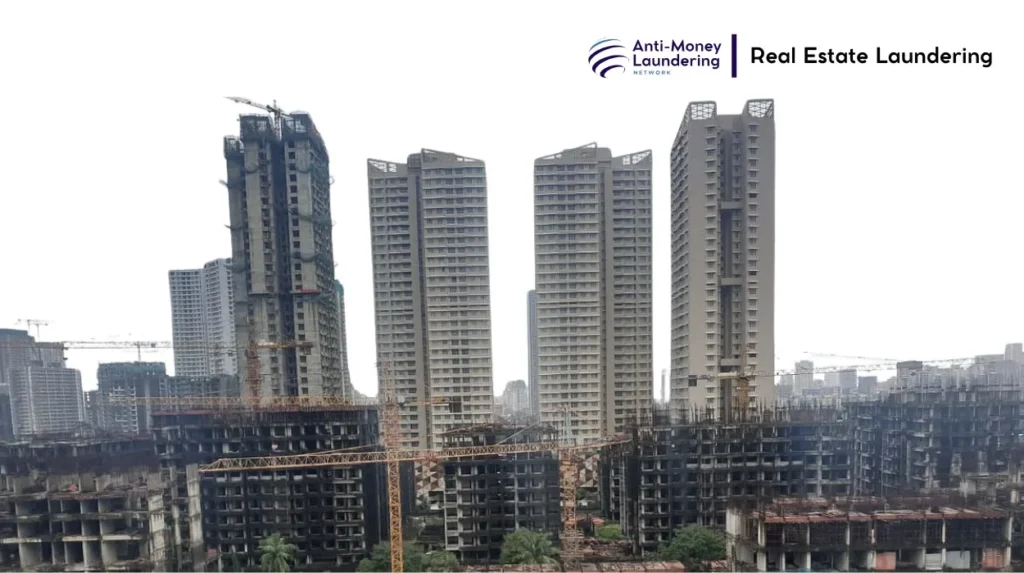The Patra Chawl Redevelopment project was launched in 2008 by the Maharashtra Housing and Area Development Authority (MHADA) with the aim of rehabilitating over 672 tenant families living in the Patra Chawl located in Siddharth Nagar, Goregaon, Mumbai. The original chawl spanned 47 acres and was a barrack structure dating back to British colonial times. The redevelopment initiative intended to replace the dilapidated chawl with modern residential housing, offering improved living standards for the tenant families as well as additional flats for sale to recover project costs. The redevelopment was entrusted to Guru Ashish Construction Pvt Ltd (GACPL), a subsidiary of Housing Development and Infrastructure Limited (HDIL).
The project’s vision was to transition Mumbai’s substandard chawl housing into vertical redevelopment projects that would provide safe, contemporary homes while balancing public housing needs with market feasibility through the sale of excess floor space index (FSI). MHADA aimed to provide 2BHK flats to the original tenants and use funds generated from selling free-sale units to partially finance construction.
Key decision makers included the MHADA authorities overseeing redevelopment policies, the management teams at GACPL and HDIL, and political figures allegedly linked through connections with directors such as Pravin Raut. The initial years saw tenant relocations agreed upon under a tripartite agreement between MHADA, GACPL, and the tenant’s association. However, completion timelines extended far beyond initial promises, with possession delays continuing into 2022 and beyond.
Controversies & Scandals: What is the Controversy of Patra Chawl?
The Patra Chawl redevelopment became embroiled in controversy as residents awaited promised housing for over a decade while free-sale units were reportedly sold to multiple developers. Investigations revealed irregularities including the sale of Floor Space Index rights to nine different developers for approximately ₹901.79 crore, without fulfilling obligations to rehabilitate the tenant families adequately.
Central allegations involve financial mismanagement, with accusations that GACPL, under HDIL’s umbrella, misappropriated funds and failed to construct promised flats. Political figures including Shiv Sena leader Sanjay Raut have faced scrutiny due to their connections with implicated directors.
The “Patra Chawl scam” has resulted in numerous legal cases, FIRs, and ongoing enforcement investigations, highlighting corruption and opacity in Mumbai’s socially sensitive housing policies. The residents’ disillusionment grew when occupancy certificates were issued for units not designated for original tenants but for privately sold free-sale flats, exacerbating the controversy and public outrage.
Money Laundering Activities: What is the Money Laundering Case of Patra Chawl?
The money laundering dimension surfaced prominently in investigations by the Enforcement Directorate (ED) following an FIR filed by Mumbai Police’s Economic Offences Wing. The case involves diversion and layering techniques such as:
- Overvaluation of Floor Space Index (FSI) sales relative to construction costs and real value.
- Use of multiple developers and nominees to obfuscate direct beneficial ownership.
- Complex corporate structures, including shell companies affiliated with HDIL, to mask proceeds.
- Under-invoicing and layered transactions to launder criminal proceeds believed to total over ₹1,039 crore.
- Diversion of funds to purchase land parcels and properties unrelated to the project.
Senior figures, especially Pravin Raut, former GACPL director, allegedly diverted substantial monies for personal use, amplifying the scale of the financial fraud.
International Links & Benefited Countries
While direct offshore links remain unconfirmed publicly, the complex corporate entities involved suggest possible cross-border transactions or use of opaque offshore companies for layering funds. Mumbai’s real estate money laundering ecosystem has precedent for benefiting tax haven jurisdictions, which could be implicated here as conduits or beneficiaries in hidden money flows.
Regulatory Actions & Legal Proceedings
Regulatory responses have included attachment of assets valued over ₹73 crore by the ED, court summons against property developers, and ongoing PMLA (Prevention of Money Laundering Act) prosecutions. MHADA itself was removed as the project developer for a period before retaking control in 2021, with government approvals to continue completion efforts.
Courts have repeatedly heard cases regarding breach of trust, fraud, and money laundering related to the project, with processes continuing into 2025. Despite these interventions, many affected families have yet to receive possession, and rent arrears from delays have been acknowledged by authorities as payable to displaced residents.
Public Impact & Market Reaction
The prolonged delays and scandal have severely impacted investor confidence in the region, particularly in Goregaon Patra Chawl redevelopment zones. Trust in MHADA and associated developers has eroded, depressing local property values and housing market stability. Original beneficiary families suffered displacement hardships with some forced to relocate out of Mumbai, while speculative buyers awaited possession of free-sale units indefinitely.
The case has become emblematic of broader challenges plaguing Mumbai’s urban redevelopment, including opaque land dealings, ineffective governance, and political interference affecting market integrity.
Current Status & Future Outlook: MHADA Patra Chawl Goregaon When Get Possession?
As of early 2025, MHADA has taken over responsibility for project execution, completing and allotting 672 flats to the original tenants after nearly 16 years of delay. Official possession has begun in phases with compensation paid for rent arrears from 2018 to 2022 to affected families. The redevelopment is thus moving towards operational status but remains subject to scrutiny by enforcement agencies and courts owing to lingering legal and financial controversies.
Expert opinion suggests that while the rehabilitative goals are finally being met, the case will continue to serve as a cautionary tale regarding governance loopholes in Indian real estate. Transparent monitoring, stronger anti-money laundering enforcement, and tenant protection mechanisms are recommended priorities to prevent recurrence of similar controversies.
Patra Chawl Redevelopment is a landmark yet troubled urban renewal project in Mumbai that exposes the intersection of political complicity, real estate finance opacity, and social housing challenges. Understanding its full context is essential for policymakers, regulators, and investors striving for a fairer and more accountable housing development landscape in India.

